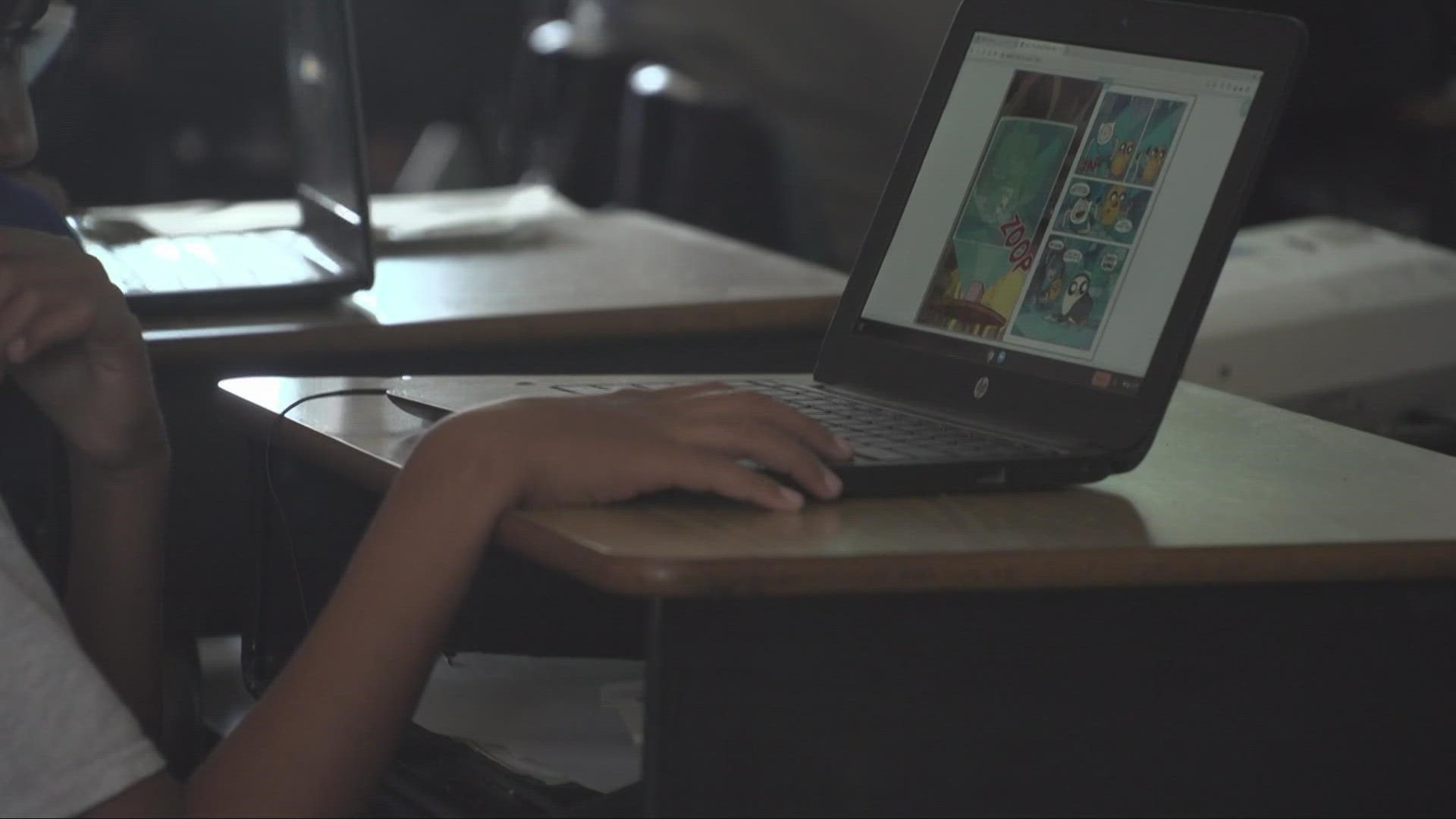SACRAMENTO, Calif. — Pashto, Chinese, Russian.
Those are just three of the more than 13 languages spoken throughout schools in the Sacramento City Unified School District. In fact, thousands of young local students are English Learners — students whose first language is not English.
So what’s the point?
The ongoing teacher shortage across California makes it even more difficult for English learners to learn. ABC10 spoke to experts and looked at the potential consequences of falling behind, and what’s being done to address concerns.
What ABC10 found was that often it is students that are helping their peers learn in the classroom.
Meet the Amin family
"I like to do math," Abdullah Amin, a second-grade student said.
His brothers Faisal and Khalid echo the same love for math.
"We come to school. We play here. When we go back home, we eat and then we pray," said Khalid, a sixth-grader. "Then we like play games with each other."
Their days are pretty typical now, but things weren't always easy for these three brothers.
"I didn't know English that much," said Abdullah. "When I like, came to first grade, they like teach me English."
The Amin family emigrated from Afghanistan to Sacramento in 2017 for security reasons. ABC10 asked Abdullah what it felt like when he didn't know what his teachers were saying, here was his response.
"Nerve-wracking," he said.
None of the brothers spoke English when they entered the Sacramento City Unified School District. They primarily spoke their native language of Pashto, says their father Hamidullah Amin.
"They bring the homework to in they asked me how can I do in I will try to help them," said Amin. "In some time, I didn't understand. I look in search in the Google and try to find the solution for him for them."
He went on to say that it was also tricky because there was no one around them to translate.
Something Faisal explained it was scary.
"When I came here," Faisal said. "I didn't know nobody, like even the teachers. I was kind of scared. When I came, there was nobody in our class, like from our country. They would like all California people's like, English. I was scared, and the teacher was trying to help me, but I didn't understand."
Khalid — his brother — said he relied on friends to help translate for him.
"They like called my friends to translate," he said. "They were trying to make me like, understand a little bit."
Language barriers in the classroom
This isn't uncommon at Pacific Elementary.
Dr. Karen Bridges, the school's interim principal, says they've seen an increase in Afghan refugee students just in the last year because of the withdrawal from Afghanistan in the summer of 2021.
"People may not be aware of like some of the issues that they've had and that they've experienced in their country," said Bridges. "Some of the trauma that they've experienced and understanding that trauma, and how when they come over here, you know, some of the things that have happened to them. It can actually, you know, affect some of their learning. But at the same time, when we look at these kids, they're very, very resilient. They're very, they want to learn, they're eager to learn, you know, they want to do whatever it wherever it is that they can do."
Dr. Olga Simms, the director of the Multilingual Literacy Department at SCUSD, which helps all newcomers, refugees, and migrant students explains what's going on.
"We are in a state of emergency, I would call (it) when we're suffering from a teacher shortage," Simms said. "Then when you add that we're suffering from a teacher shortage and bilingual teacher shortage."
Simms says the district's human resources department has been working nonstop to hire and recruit — even working with neighboring universities — to find candidates.
"What you want to do is use language that is not a deficit language, but a language that empowers students to be who they are and what they want to be in that classroom," Simms said.
ABC10 caught up with fourth-grade teacher Curtis Stansfield. He only speaks English but has multiple students who speak different languages in his class.
ABC10 asked what it's like to teach while navigating language barriers.
"It does get frustrating for them too," Stansfield said. "Because, you know, we read it left to right, and they're used to reading right to left."
He added he likes working in smaller groups.
"Especially with these newcomers, students from Afghanistan and places, I do small groups with them," he said. "We are learning specifically letters and sounds phonics because the alphabet is totally foreign to them, they have never seen it before. So we start off with the basics."
Classmates helping classmates
Online programs like "BrainPOP" also help teach English language basics, but still many students rely on each other.
"A lot of times, we'll have another student in the classroom, who speaks the same language, but also speaks English," said Bridges. "They kind of help support you know, that students, so what we do is we tend to sit those students together so that they can support each other. That's working out a whole lot, that's really helped a lot of the teachers."
The Amin brothers are now helping their fellow classmates through that all too familiar experience.
"So there was like, a kid that speaks Farsi," said Abdullah. "He didn't know what the teacher was saying, and then I help them do it."
When asked why he did that, he simply said, " it's more kind, and more respectful, and more responsible."
Whether kids in their class need help to fix a computer or anything else, the brothers make sure their classmates have help navigating a new world.
"I (am) proud of them," said their father Hamidullah.



















